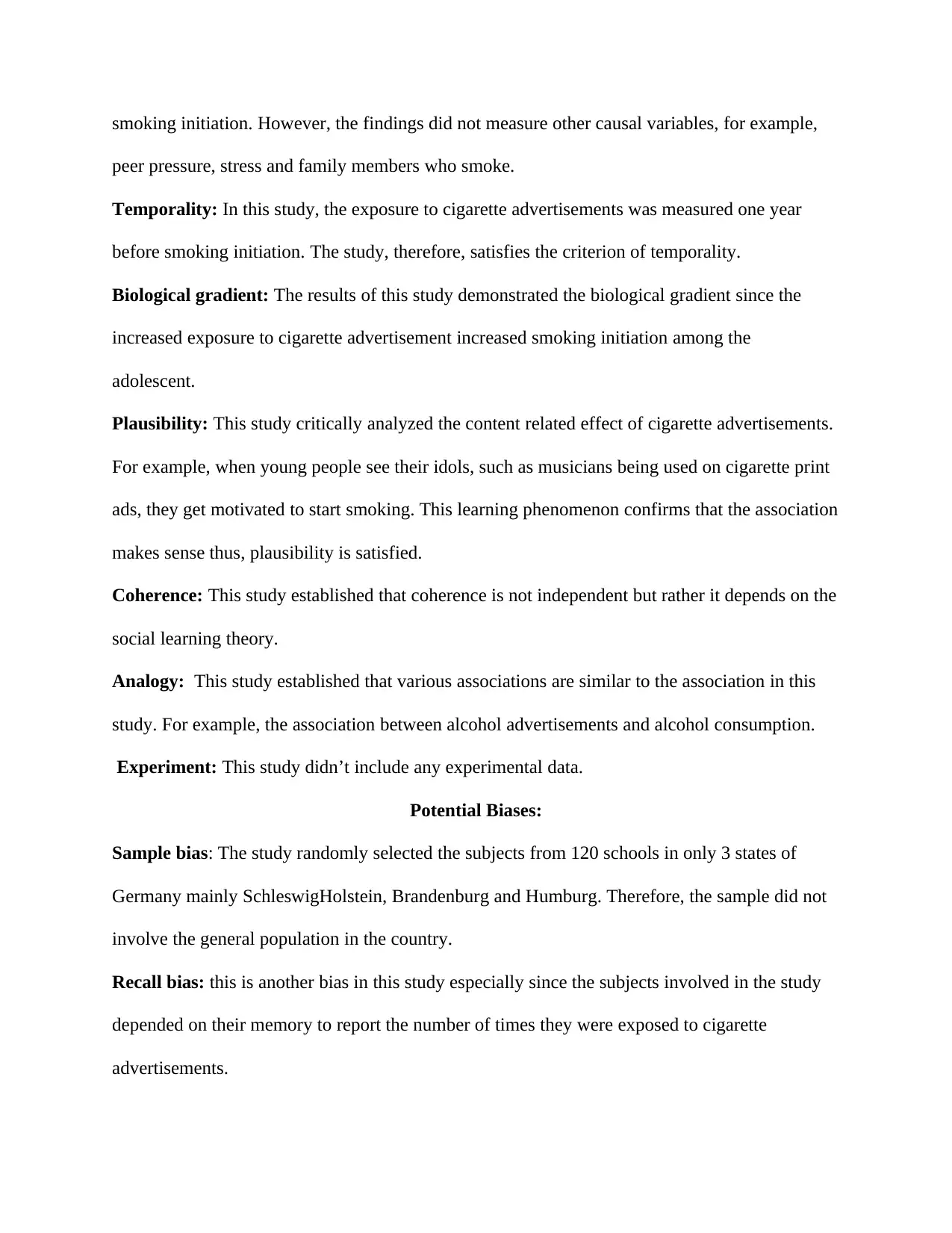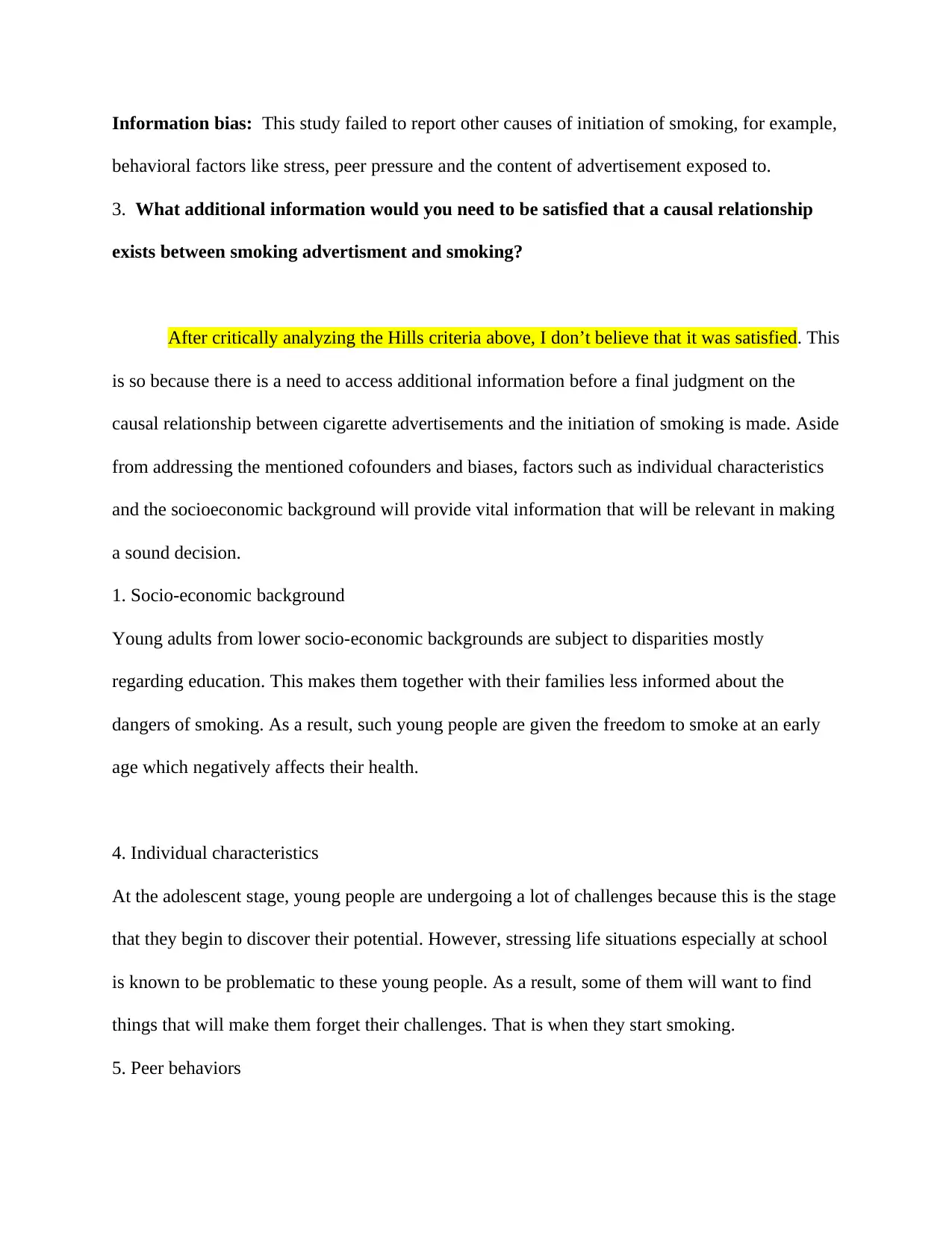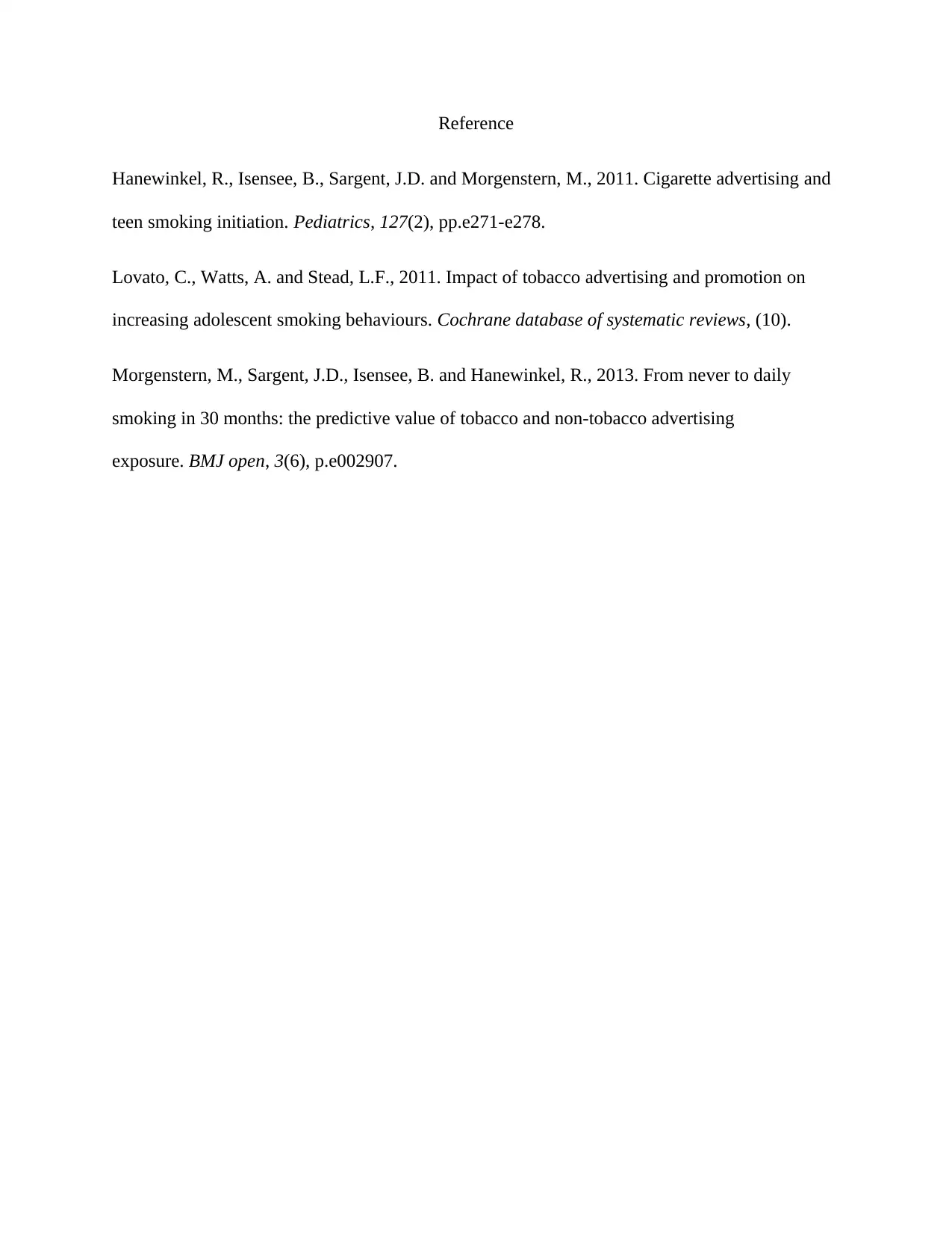Causal Relationship: Cigarette Advertising and Smoking Report
VerifiedAdded on 2022/09/29
|5
|1044
|23
Report
AI Summary
This report analyzes a study by Hanewinkel et al. examining the association between cigarette advertising and adolescent smoking initiation. The study revealed a dose-response relationship, with higher exposure to cigarette advertisements correlating with increased smoking initiation. The report evaluates the study based on Hill's criteria, highlighting strengths like the strong association and consistency, while also acknowledging limitations such as sample bias and recall bias. The analysis emphasizes the need for additional information, including socioeconomic background, individual characteristics, and peer behaviors, to establish a definitive causal relationship. The report concludes that while the study suggests a link, further investigation is needed to account for confounding variables and biases, ultimately determining the extent to which cigarette advertising influences the initiation of smoking among young people. The report also includes details of a similar study on television watching and smoking.
1 out of 5







![[object Object]](/_next/static/media/star-bottom.7253800d.svg)